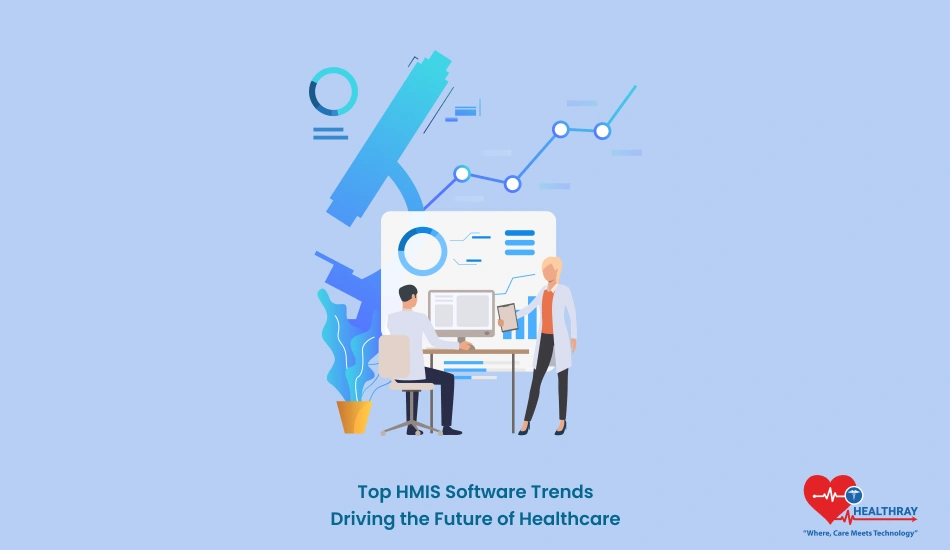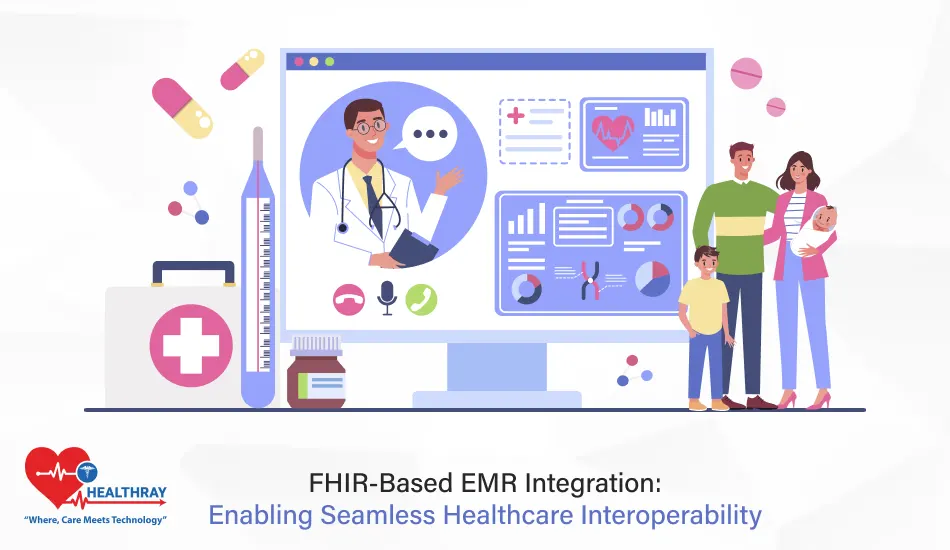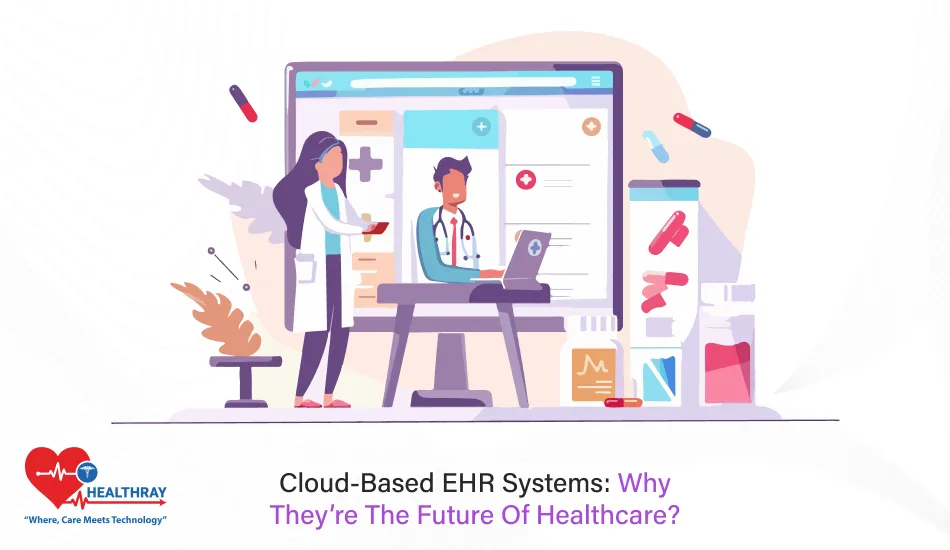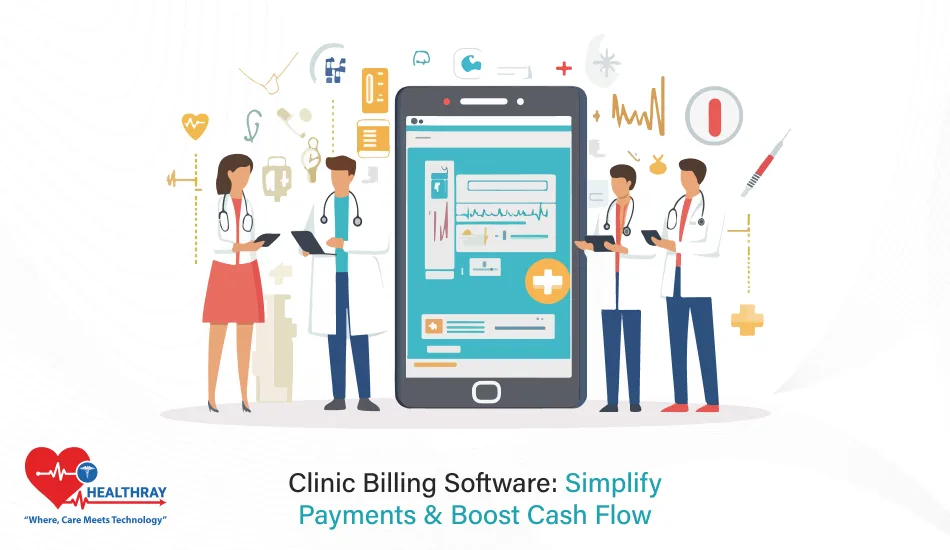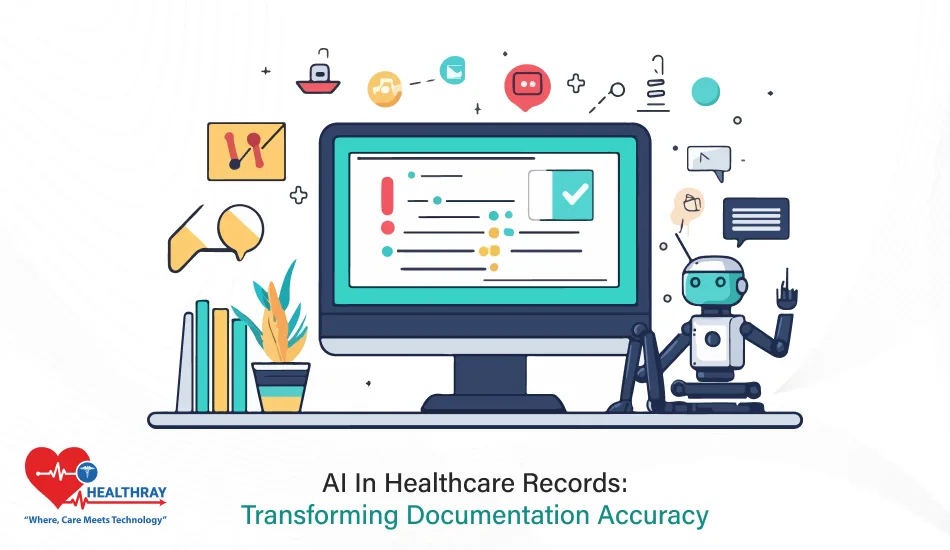The healthcare industry is evolving at breakneck pace and Healthcare Management Information Systems (HMIS) are squarely at the eye of that evolution. What are the trends driving this transformation? That is the major issue in the minds of many healthcare IT managers, hospital executives, and so on. From the application of artificial intelligence, through better monitoring of data security, HMIS software is being updated and redesigned to respond to growing pressures and tighter regulation. The challenge of making healthcare delivery more efficient, safe, and patient-focused has been a goal.
In this article, we’ll explore the most impactful Hospital Information Management System software trends that are driving the future of healthcare. You’ll discover how these trends are changing daily operations, improving patient care, and addressing data security issues. Regardless of whether you are assessing your current HMIS and infrastructure, or looking to stay ahead of the curve, these trends will provide you with key inputs for planning on the near future. Let’s consider the impact of these innovations on a new era in healthcare.
AI and Machine Learning in HMIS
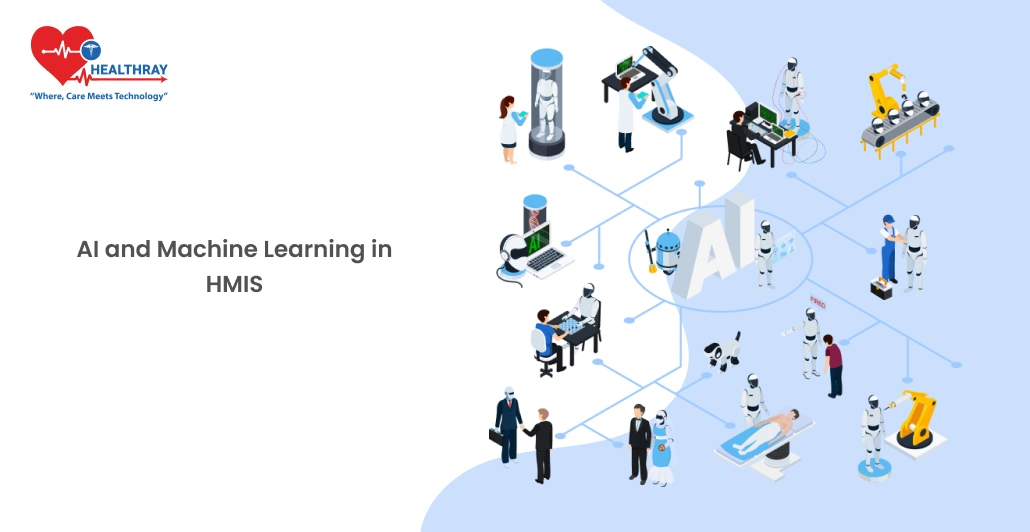
HMIS systems are using artificial intelligence (AI) and machine learning (ML), technologies that are changing healthcare in unprecedented ways, in order to boost productivity and improve patient care. What use cases exist for AI and ML within HMIS? Basically, these tools allow data extraction and mining, outsourcing outperforms many of the current methods, and prediction of the need for treatment.
AI-powered HMIS systems have lightning-fast data analysis capabilities. This makes it possible to hospitals to make faster and more precise decision on the one hand within the database shops patients records, diagnostic images, and treatment histories. For example, predictive analytics based on AI can be used to analyze a patient’s data and determine who is at high risk of developing a disease (e.g., heart disease or sepsis) and can, therefore, physicians take action early.
AI is applicable to administrative work including scheduling, coding and billing, and (2) predictive analytics. With the reduction in manual errors staff now have more time to attend to the needs of patients. Machine learning algorithms are helping hospitals to personalise by tailoring treatments to individual patient health data and patterns, leading to more effective and precise healthcare.
Challenges in AI Implementation
Despite being relatively beneficial, there are also some drawbacks to the application of AI in HMIS. It is an investment in large scale for both highly skilled personnel and technology. Particularly, since artificial intelligence is likely to require access to patient private information, data privacy is critically important. Because of this, adherence to laws like HIPAA is critical. Trust and efficacy also rely on systems to be fair and free of bias.
Artificial intelligence and machine learning in HMIS have opened up novel avenues driving clinical and operational advances. Healthcare professionals can use the phenomenon to improve both patient care and operational efficiency by alleviating any underlying issues.
Cloud-Based HMIS Solutions
Data storage and retrieval practices in the locations of health care facilities in which AI-Driven Hospital Information Management System data reside are changing as cloud-based HMIS options become available. Utilization of on-site facilities has been restricted because the HMIS systems have typically been run in an on-site, server-based format. Why are healthcare facilities switching to cloud-based HMIS? In the case of most of it is the cost-effectiveness, the scalability, and the flexibility of cloud.
Real-time, location-based information can be acquired by healthcare into Cloud-based HMIS. Due to the ability of patients and physicians to securely communicate and share information from anywhere in the world, this is particularly useful for telemedicine and remote care. Cloud systems make cost management easier by enabling hospitals to scale their storage requirements as they expand without having to make significant investments in new infrastructure.
Security and Compliance in Cloud HMIS
A data security issue that needs to be given serious consideration when implementing a cloud-based solution is, for example, the unauthorized access to the data services performed on a service provider’s data centre. Hospitals must make sure cloud providers adhere to stringent security guidelines, particularly because medical data is a common target for cyberattacks. Many cloud platforms are preconfigured with security features (e.g., multi-factor authentication, data encryption, HIPAA compliance). These workflows assist hospitals to take advantage of the cloud benefits while maintaining data confidentiality.
The Future of Cloud in Healthcare
Cloud-based HMIS in the next few years is predicted to facilitate the change toward telehealth and remote patient surveillance. Cloud technology presents healthcare professionals with a sense of mastery, real-time availability and enhanced data interoperability – all of which are critical to meet the evolving needs of the profession and the patient population.
Healthcare decision-makers that take advantage of these solutions will be poised, moving forward, to provide, at low cost, convenient, readily available care as the adoption of cloud continues, thus enabling their institutions to be at the forefront of the digital health revolution.
Interoperability and Data Integration
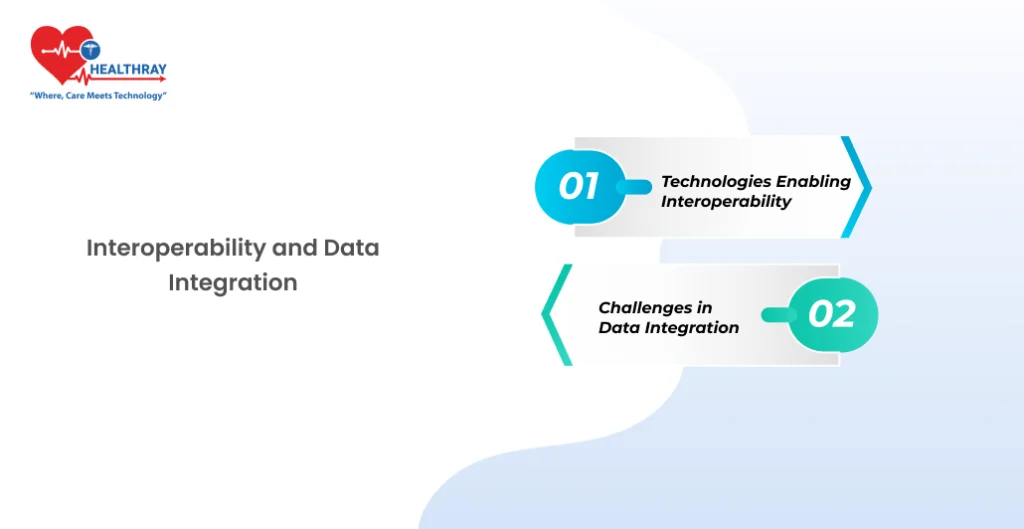
Interoperability—the ability of different systems to work together and share information—is a foundational element in modern healthcare. Why is interoperability so important in HMIS? Briefly, it has been shown to contribute to the integration of patient data into a continuous picture, enhancing clinical integration of care.
HSI software interoperability enables easy exchange of HMIS software data between various departments and even external systems (e.g., labs, pharmacy, another hospital). That is, when the patient moves from one institution to another, their medical records, drugs and therapies can be directly and very quickly inquired into, reducing errors and allowing for better outcomes. Such as when a patient visits multiple physicians, integrated information ensures that each physician receives a comprehensive understanding of the patient’s state of health, thereby leading to better in quality and in continuity of care.
Technologies Enabling Interoperability
Interoperability is largely being enabled by developing standards such as FHIR (Fast Healthcare Interoperability Resources). Standardizing health information structure and exchange, however, using FHIR allows for data analysis and information exchange across systems. These standards are now being adopted by IMS providers to improve the data interoperability among platforms.
Challenges in Data Integration
Interoperability is a major bottleneck of integration, due to the need to integrate systems, the systems of which are not conceived in terms of data exchange between contemporary platforms. This may result in data silos in which information is vested in different systems making it difficult for hospitals to get a complete picture of patient data. Sustained data transfer among systems remains an issue, particularly because of varying data formats and standards available within hospitals.
Interoperability data integration are highly relevant for health professionals, for enabling increasingly standardised, more efficient and patient-centred care. Through the adoption of these technologies hospitals have the opportunity to establish an integrated and connected environment supporting patients’ care and efficient workflow.
Advanced Cybersecurity for Healthcare Data
Cybersecurity is rapidly yet another paramount issue for health care professionals due to the proliferation of digital health patient information and in cloud-based HMISs. Why is cybersecurity so important in today’s HMIS? Essentially, strong cybersecurity is critical to safeguard personal information and build trust, as patient data is a prime ransomware attack.
Cyberattacks have drastically increased in the healthcare industry, ranging from ransomware to data leak, frequently attributed to the extremely confidential character of the data kept. In HMIS, next generation, state of the art cyber security techniques are already using multi-factor authentication, encryption, and artificial intelligence based threat detection in order to prevent unauthenticated direct access and data integrity breach. Encryption obscures data, which can only be decrypted by authorized parties and multi-factor authentication adds an extra level of security to restricting data access requiring two or more assurance steps.
Emerging Cybersecurity Trends
With the help of more and more AI-based applications, healthcare facilities are increasingly being able to identify and react to threats. These utilities help IT operations to rapidly respond to the possibility of security breaches by monitoring the network traffic and identifying the suspicious activities. Due to its decentralized and unverifiable information storage scheme, the technology of blockchain is also generating considerable interest in the healthcare field for its ability to protect the patients’ data privacy.
Health information technology (IT) managers and hospitals are better positioned to strengthen their cybersecurity posture by adopting a proactive rather than a reactive stance. Security protocol updates, employee training and auditing will have to be implemented. In addition to the need to ensure that all data management operations comply with HIPAA and other laws, IT functions should be regularly tested to find vulnerabilities.
Future advanced cybersecurity will play a vital role in the protection of patient data as well as maintaining the robustness of health care systems in the future with the growing demand for digital health solutions. Investments in cybersecurity will help healthcare institutions to be better prepared to avoid data breaches and maintain patient trust.
Mobile Accessibility and Patient Portals
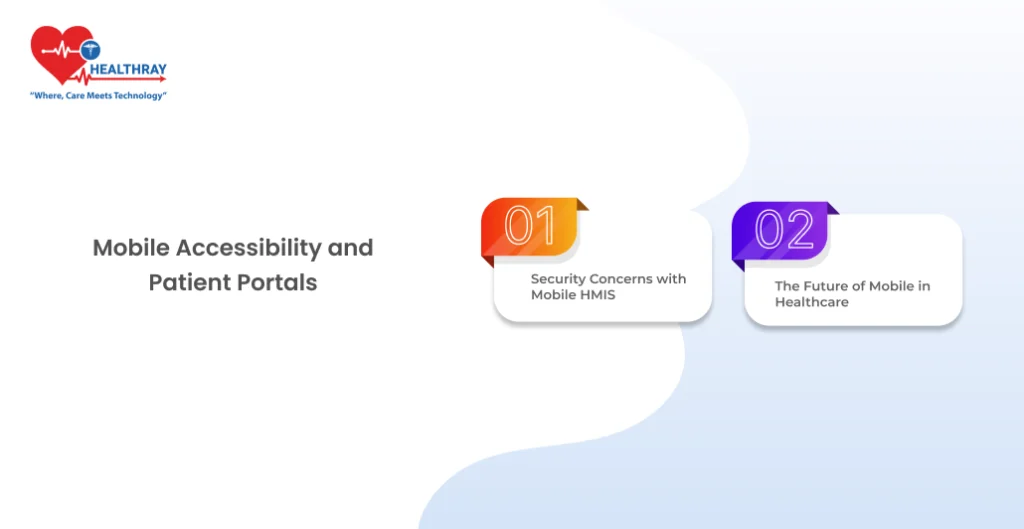
With mobile devices playing an increasingly central role in daily life, the need for accessible HMIS and patient portals via mobile devices has grown tremendously. Why is mobile accessibility important for healthcare? It is potentially usable by patients and clinicians to harvest such critical information, anytime, anyplace, and by moving the model from static to flexible and responsive health care.
Medical staff can complete charting, patient data analysis, and view diagnostic information while on the move using mobile-accessible HMIS. Doctors who are placed temporarily in departments and facilities who do not have access to patient data will favour this flexibility. Mobile-enhanced patient portals enable patients to communicate more easily with their clinicians, retrieve their clinical data, and book appointments. For example, patients can now easily calculate sleep time to better understand their rest patterns and optimize recovery particularly important for those managing chronic conditions or post-treatment care. These portals help patients become more active and engaged participants in their treatment.
Security Concerns with Mobile HMIS
There are security issues with mobile accessibility as well. It is especially important to protect HMIS data on mobile devices because mobile devices are inherently more susceptible to theft and to illegitimate use. In health settings, channels of secure access (e.g., encryption, biometric verification) have been established to reduce these threats by selectively granting the permissible access to sensitive data to the intended users. Hospitals must also protect patient privacy in the use of mobile HMIS technology, which necessitates adherence to applicable privacy regulations, such as HIPAA.
The Future of Mobile in Healthcare
It presumes an increase in mobile device use in healthcare. With the development of devices and health apps, hospitals are also beginning to incorporate them into HMIS for continuous patient tracking. Portable devices can, for instance, monitor a patient’s cardiac rate, blood sugar levels, and sleep phases and transmit the data directly to the medical records. In order to provide personalized, mobile care, patient portals and mobile HMIS will only become more significant as mobile technology develops.
The passive use of mobile accessibility can be used to improve patient satisfaction and operational efficiency in a way that makes care its fingertips.
Conclusion
The hospital management system trends of the future will influence the future of medicine and care that will emphasize patient care, operational efficiency, and/or data protection. As we’ve observed, AI and machine learning are being used in the advancement of improved patient outcomes through predictive predictions, whereas cloud-based applications are making healthcare data more available and scalable. Interoperability will ensure the sharing of information across the units, something that is essential to coordinated care. Meanwhile, cybersecurity safeguards sensitive data in an era where digital threats are constantly evolving.
Mobile accessibility, telemedicine, and data analytics, will also expand the boundaries of healthcare by enabling clinicians to provide a more reactive and individually tailored care. Staying informed about these developments can allow health information management technology, administration, and clinician to provide a better, safer, more patient-focused environment. The health care environment is changing, and those who are eager to come into HMIS innovations will be most likely to confront challenges of the future, and sustainably improve quality of care.
